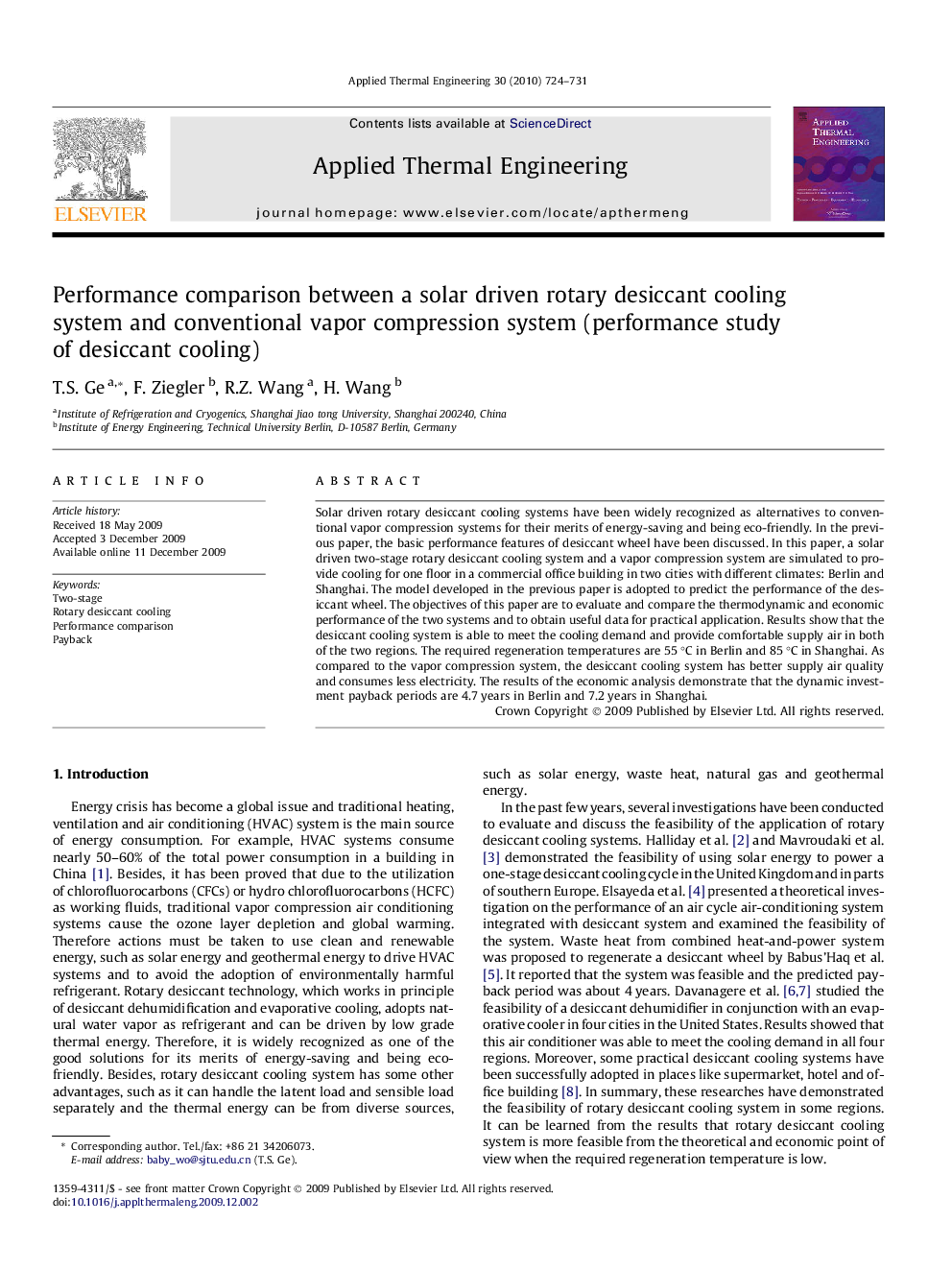| Article ID | Journal | Published Year | Pages | File Type |
|---|---|---|---|---|
| 648267 | Applied Thermal Engineering | 2010 | 8 Pages |
Solar driven rotary desiccant cooling systems have been widely recognized as alternatives to conventional vapor compression systems for their merits of energy-saving and being eco-friendly. In the previous paper, the basic performance features of desiccant wheel have been discussed. In this paper, a solar driven two-stage rotary desiccant cooling system and a vapor compression system are simulated to provide cooling for one floor in a commercial office building in two cities with different climates: Berlin and Shanghai. The model developed in the previous paper is adopted to predict the performance of the desiccant wheel. The objectives of this paper are to evaluate and compare the thermodynamic and economic performance of the two systems and to obtain useful data for practical application. Results show that the desiccant cooling system is able to meet the cooling demand and provide comfortable supply air in both of the two regions. The required regeneration temperatures are 55 °C in Berlin and 85 °C in Shanghai. As compared to the vapor compression system, the desiccant cooling system has better supply air quality and consumes less electricity. The results of the economic analysis demonstrate that the dynamic investment payback periods are 4.7 years in Berlin and 7.2 years in Shanghai.
